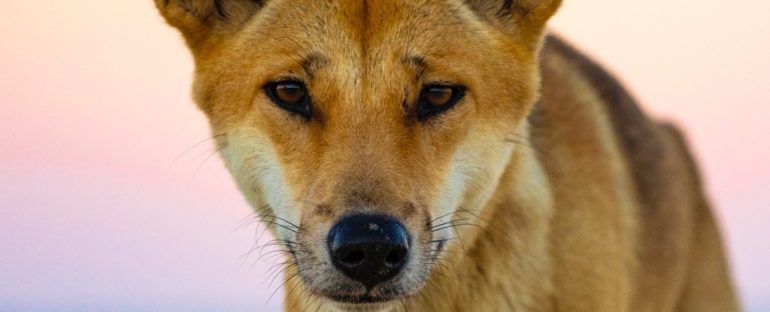The vast majority of animals considered ‘wild dogs’ in Australia are actually pure dingoes or canines that are mostly dingo in terms of their genetic makeup, new research suggests.
Scientists collated the results from DNA tests of over 5,000 wild canids across Australia and found that only about 1 percent were actually feral dogs or dog-dominant hybrids.
“We don’t have a feral dog problem in Australia,” says conservation biologist Kylie Cairns from the University of New South Wales (UNSW).
“They just aren’t established in the wild. There are rare times when a dog might go bush, but it isn’t contributing significantly to the dingo population.”
In fact, of the 5,039 samples analyzed in the study, 33.7 percent were pure dingoes, 30.4 percent were probable dingoes, and 34.7 percent were canids with greater than 50-75 percent dingo ancestry.
In other words, the ‘wild dogs’ terminology almost entirely misrepresents the truth about what these animals really are, and it’s not just a question of semantics.
Previous research has demonstrated that most Australians are generally unaware that ‘wild dogs’ management policies in Australia (such as culling and baiting) also target dingoes in addition to feral dogs of modern, domesticated lineage, and likely because the ambiguous terminology effectively renders dingoes invisible.
As apex predators, dingoes play a critical role in Australia’s environment when allowed to do so. Removing them from the landscape has seen native grasslands give way to an overabundance of problematic woody shrubs, allowed feral cats and foxes to devour endangered marsupials unchecked, and even changed the shapes of sand dunes.
“‘Wild dog’ isn’t a scientific term – it’s a euphemism,” Cairns says. “Dingoes are a native Australian animal, and many people don’t like the idea of using lethal control on native animals.”
The findings, partially funded by dingo conservation bodies, also challenge the perception the dingo, Australia’s apex terrestrial predator, is becoming extinct in the wild.
While hybridization is indeed occurring in Australia, interbreeding between dingoes and dogs accounts for only a minority of wild canids – with most of the dog introgression evident in the heavily populated southeastern parts of the country.
The reasons for this could be two-fold, reflecting both the historical effects of European settlement in the region (giving more time for dog genes to mix within dingo populations), but also the impacts of ‘wild dog’ management policies in Australian states like New South Wales, Victoria, and southern Queensland.
“The widespread occurrence of intensive lethal control, particularly aerial baiting, may increase the likelihood of dingo × dog hybridization by fracturing dingo social structures,” the researchers write in their paper.
While the results show the dingo is definitely holding on in Australia despite these pressures – especially in parts of the country that use less lethal control measures – the researchers say we need to talk about this native animal in plain terms, not using indirect ‘wild dogs’ language that masks the truth and extent of lethal dingo management policies.
Previous research has shown that ‘wild dogs’ terminology is favored by studies funded by the livestock industry – a bias in language that’s preventing us from important discussions on dingo conservation.
“The lack of public engagement and debate on dingo conservation on private and public lands in Australia has allowed agricultural industry priorities to dominate government policy and decision making on dingo management,” the authors explain.
“[This] can in part be attributed to the renaming of the Australian dingo as a wild dog in government literature and allowing the general misunderstanding that all wild dogs are feral dogs to persist.”
The findings are reported in Australian Mammalogy.



